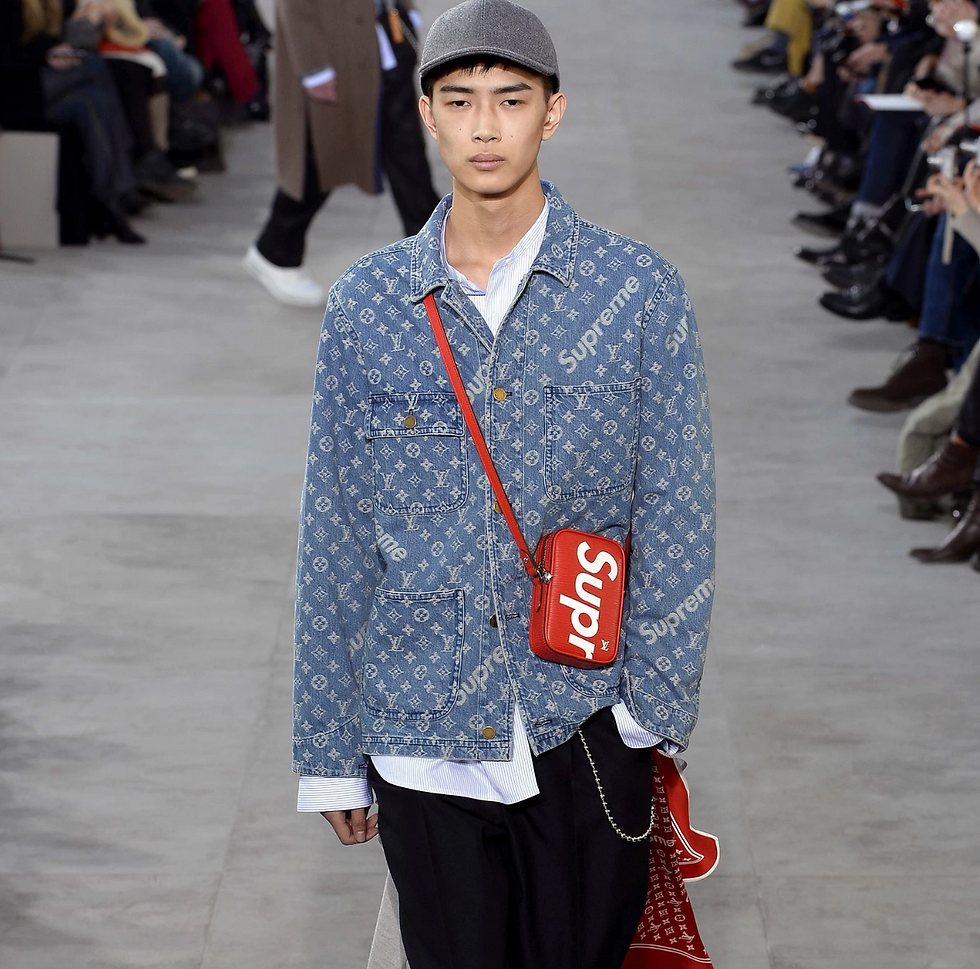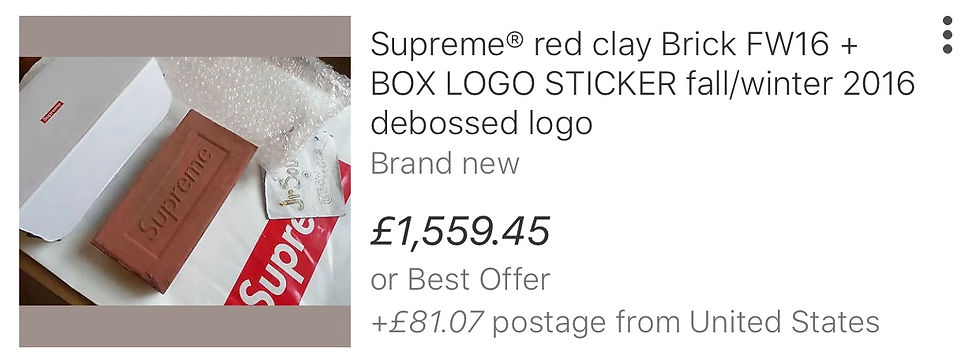So, why are designer collaborations so powerful?
- Ellie

- Dec 1, 2018
- 3 min read

Over recent years we've seen more collabs than ever reach the shelves. From luxury fashion brands collabing with high street stores, to designers working with artists and very rare streetwear drops. It almost seems like a buy-one-get-one-free deal - two brands for the price of one. Everyone seems to be doing a collaboration this year - from Fila and Fendi to JW Anderson and Converse. Everyone is jumping on this new, what could be considered as 'trend'.
The whole idea of collaborations baffles me - Luxury brands such as Moschino and Balmain collaborating with high street store H&M just doesn't sit right, but what once would have been considered damaging for a luxury brands reputation is now seen as brand enrichment. High-fashion houses worried that their brand name may become tarnished if they collaborated with lower-end brands or designers. However, today luxury fashion houses are increasingly partnering with fast fashion companies to produce collections which allow consumers with less disposable income to have the designer look on a budget.
Palace and Adidas have worked along side each other for years. It's clearly beneficial to both, as Adidas have a huge brand name, expertise and the money and ability to mass produce, that Palace can utilise. This gives Palace the exposure to grow, but not with the expensive of having to worry about cash. These kind of collaborations are lifelines for young, upcoming designers.

The Louis Vuitton x Supreme collaboration feels like the collab to end all collabs. The two brands, are at the very height of very different fashion worlds, built upon their own powerful iconography. They have somehow welded these together and have managed to create something more powerful and iconic than themselves!
I say that it's the collaboration to end all collabs because it feels like ther's not much more they can do to top this. Nothing will have as much impact as this collaboration has had on the fashion industry. What was once considered two completely different worlds - LV being arguably the world's most valuable luxury brand whilst Supreme being as 'cult skatewear' brand then surely this collab shows us these different worlds are no longer that far apart.

Another factor which I think contributes to the success of collaborations is the huge resell value on them because of their 'exclusiveness', mainly a trend in streetwear brands, such as the likes of Supreme. For example, the Supreme box logo is far more than just a label, but a brand insignia that highlights any item with cult appeal. In 2016, Supreme even released a branded brick, which sold out in minutes. Streetwear culture site HighSnobiety said the novelty item showed Supreme’s “sadomasochistic relationship with its fans.”
Buyers will 'cop' these with no intent to wear them but purely to resell for extortionate prices, as people are so desperate to get their hands on these products they are willing to pay huge prices for them! I personally bought a t-shirt from a recent Supreme x CDG collab for £54 but went on to sell it 2 hours after the drop for £275. I think the success of collaborations is down to the thrill and excitement for consumers of are they going to be able to cop the item!
Collabs are so powerful because in a world were consumers are increasingly becomming obsessed with uniqueness and rarity, getting your hands on the most exclusive collabs are a way of making yourself stand out. Not only are collaborations something that gets consumers excited but it creates spark and talk for both the brands on social media - giving them more exposure which is something which any brands want. But it can result in brands being able to charge a higher price for the garment and benefit from higher profit margins as
But when everyone is wearing the most exclusive garments is it leading to a kind of collaboration fatigue and creative homogeneity?








Comments